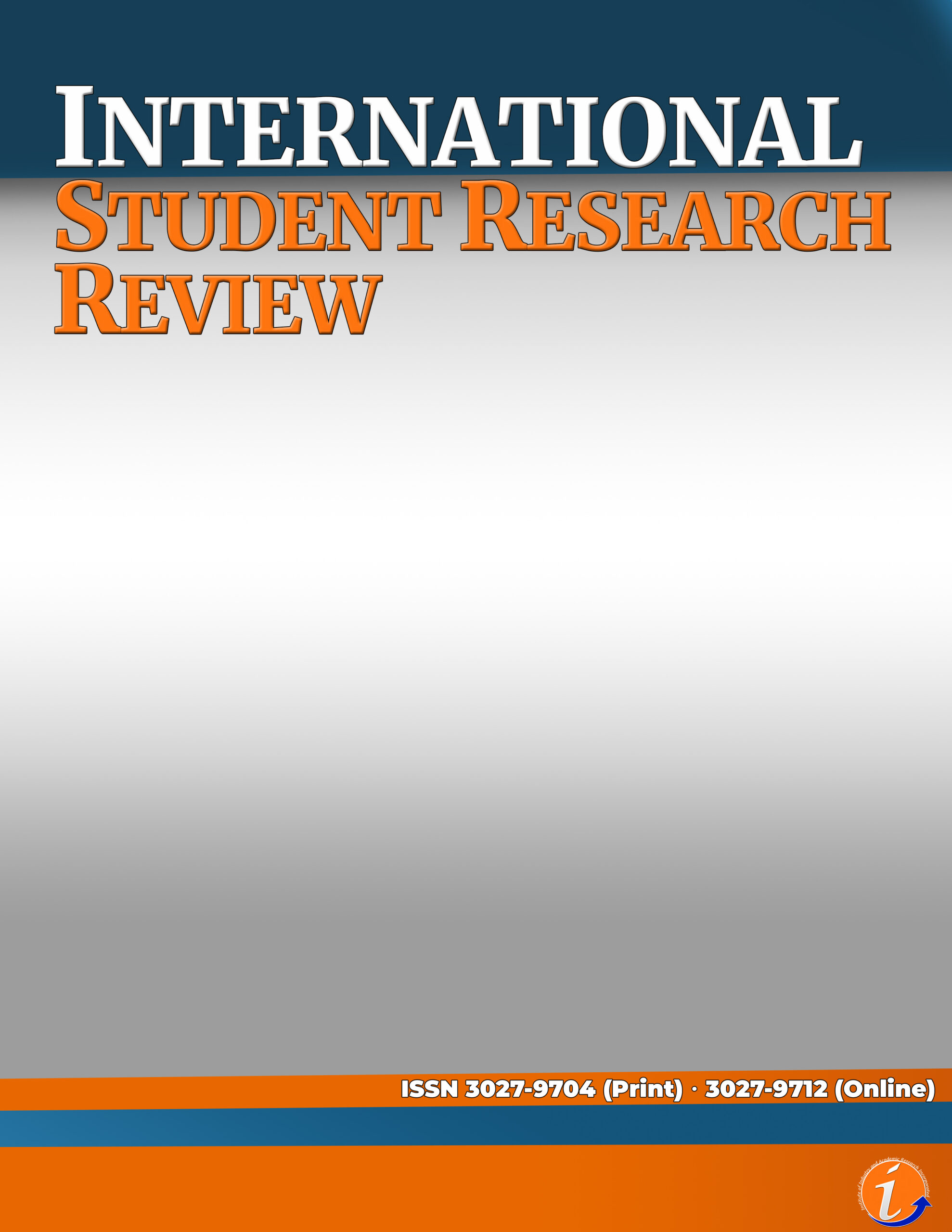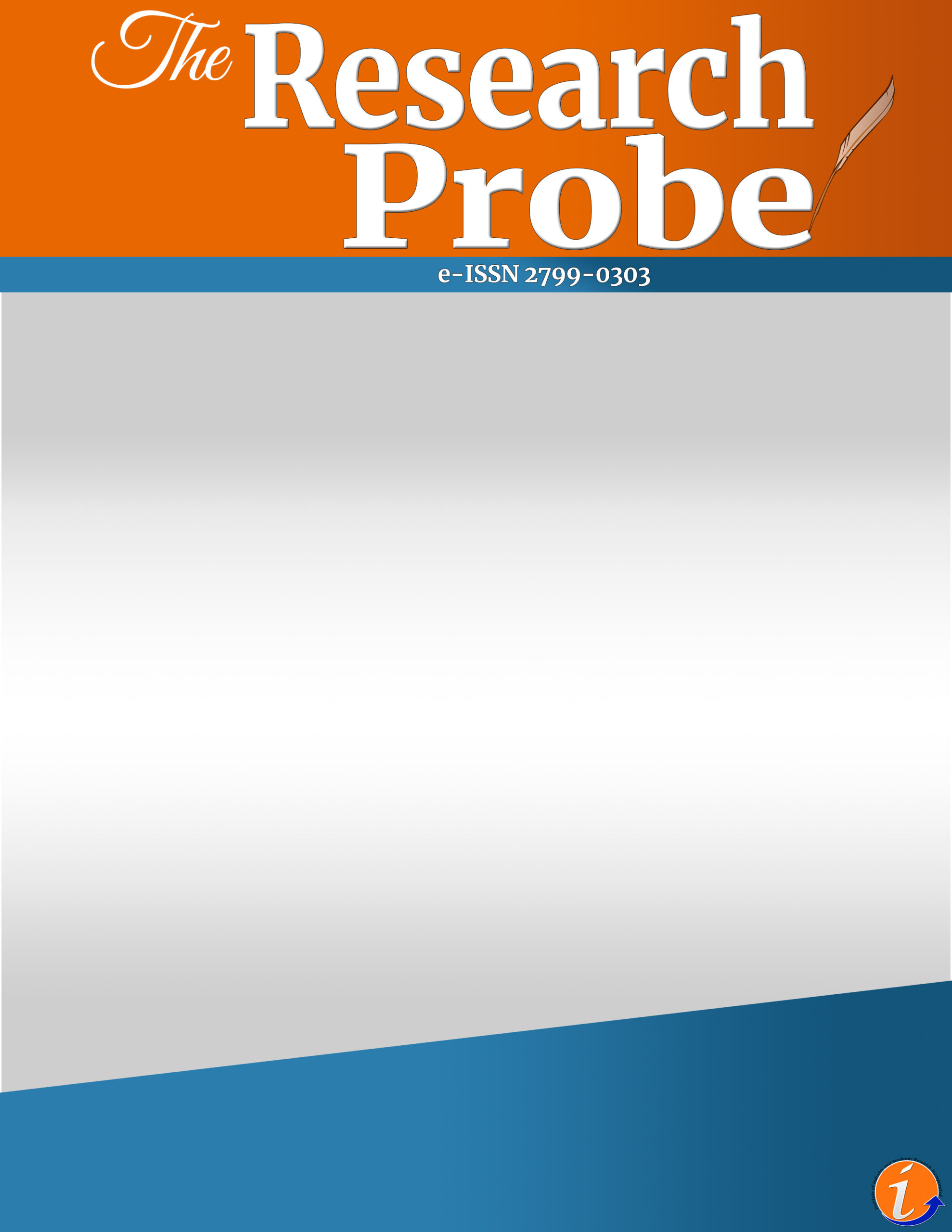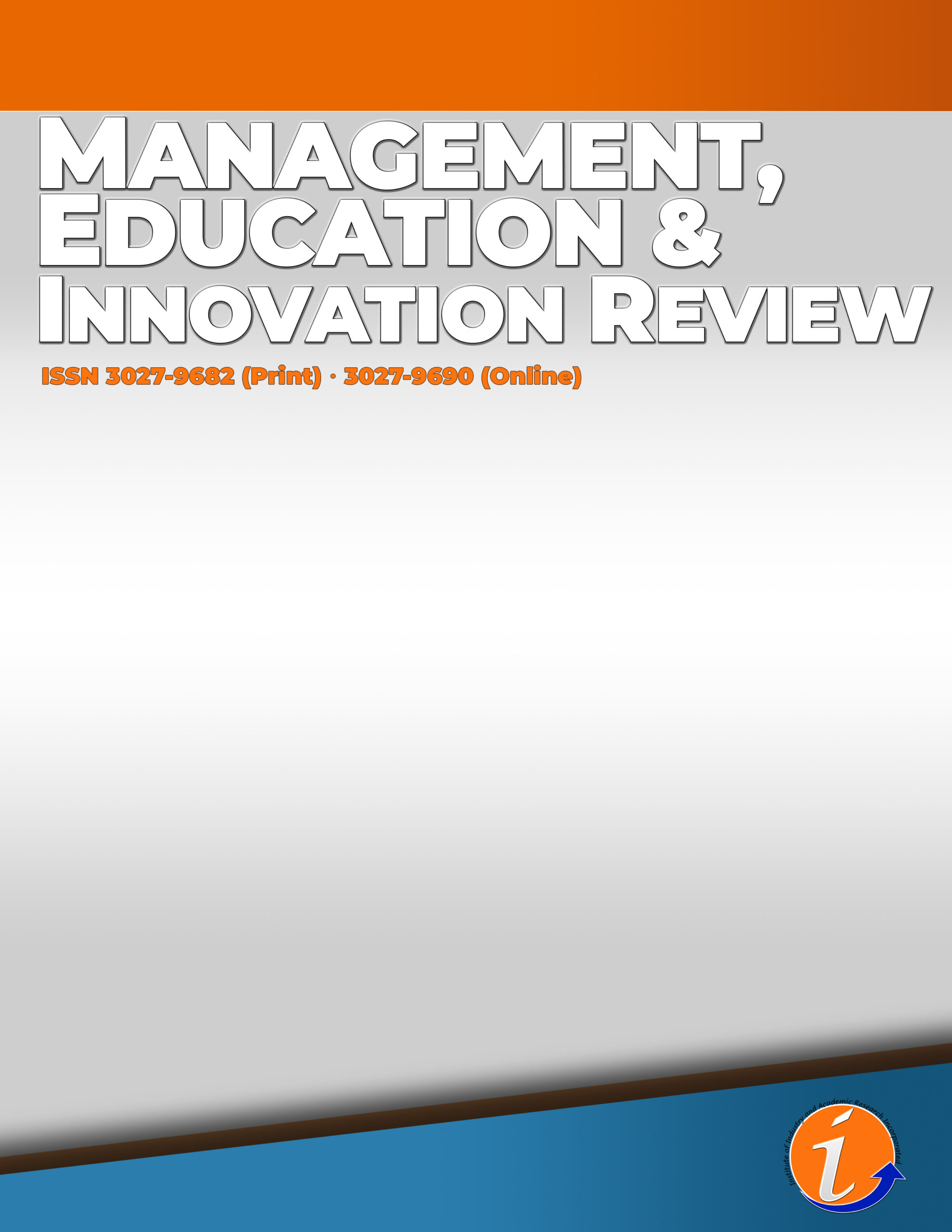Abstract
The COVID-19 global pandemic has an immense impact in the lives of the people all over the world, and the educational system is one of those who struggled to adjust to the catastrophic event. The new curriculum faced setbacks from the difficulties to effectuate students’ social presence and create a safe and effective learning environment. This study determined the undergraduate students learning preference, specifically between online and on-site learning; the impact of the sudden shift to the students social, economic or financial, and academic performance; and the coping strategies used by students to overcome the challenges brought by the change of learning modality. Systematic random sampling was used to select 30 students who served as respondents of the study. Results showed that on-site learning was preferred over online learning modality as it impacted the students in terms of social interaction, active participation, and accessibility to resources. Most of the students revealed that the shift in learning modality has brought about challenges in their physical, moral, emotional and social well-being, financial stability, and academic performance. But they had overcome these with the support of their family, friends, and love ones. This pandemic has taught students the importance of time management, flexibility and resilience, and strong bond with people they can work and open up well.
Keywords: COVID-19, online class, onsite class, students’ preference, coping strategies
References
Alsaaty, F. M., Carter, E., Abrahams, D. & Alshameri, F. (2016). Traditional versus online learning in institutions of higher education: Minority business students’ perceptions. Business and Management Research, 5(2), 31-41. http://dx.doi.org/10.5430/bmr.v5n2p31.
Arslanyilmaz, A. & Sullins, J. (2013). The extent of instructor participation in an online computer science course: How much is enough? The Quarterly Review of Distance Education, 14(2), 63-74.
Asif, M., Khan, M. A., & Habib, S. (2022, July 19). Students’ perception towards new face of education during this unprecedented phase of COVID-19 outbreak: An empirical study of higher educational institutions in Saudi Arabia. European Journal of Investigation in Health, Psychology and Education. 12(7), 835-853. https://doi.org/10.3390/ejihpe12070061
Bali, S. T. (n.d.). Students’ perceptions toward online learning and face-to-face learning courses. J. Phys.: Conf. Ser. 1108, 012094. https://doi.org/10.1088/1742-6596/1108/1/012094
Barrot, J.S., Llenares, I.I. & del Rosario, L.S. (2021). Students’ online learning challenges during the pandemic and how they cope with them: The case of the Philippines. Educ Inf Technol, 26, 7321–7338. https://doi.org/10.1007/s10639-021-10589-x
Basar, Z. M., Mansor, A. N., Jamaludin, K. A., & Alias, B. S. (2021, June 30). The effectiveness and challenges of online learning for secondary school students — a case study. Asian Journal of University Education, 7(3), 119-129. https://doi.org/10.24191/ajue.v17i3.14514
Butnaru, G. I., Haller, A. P., Dragolea, L. L., Anichiti, A., & Tacu Hârșan, G. D. (2021). Students’ wellbeing during transition from onsite to online education: Are there risks arising from social isolation? International Journal of Environmental Research and Public Health, 18(18), 9665. https://doi.org/10.3390/ijerph18189665
Carr, S. (2000). As distance education comes of age, the challenge is keeping the students. Chronicle of Higher Education, 46(23), A39-A41.
Donitsa-Schmidt, S., & Ramot, R. (2020). Opportunities and challenges: Teacher education in Israel in the Covid-19 pandemic. Journal of Education for Teaching, 46(4), 586–595.
Fawaz, M., Al Nakhal, M., & Itani, M. (2021). COVID-19 quarantine stressors and management among Lebanese students: A qualitative study. Current Psychology, 1–8.
Folkman S. (1984). Personal control and stress and coping processes: a theoretical analysis. J. Pers. Soc. Psychol. 46, 839–852
Franchi T. The impact of the Covid-19 pandemic on current anatomy education and future careers: A student’s perspective. Anatomical Sciences Education. 2020;13(3):312–315. https://doi.org/10.1002/ase.1966
Fredericksen, E., Pickett, A., & Shea, P. (2006). Student satisfaction and perceived learning with on-line courses: Principles and examples from the SUNY learning network. Journal of asynchronous Learning Networks, 4(2), 2-31.
Freire, C., Ferradas, M. del M., Regueiro, B., Rodriguez, S., Valle, A., & Nuñez, J. C. (2020, April 6). Coping strategies and self-efficacy in university student. Front. Psychol, 11, 841. https://doi.org/10.3389/fpsyg.2020.00841
González-Calvo, G., Barba-Martín, R., Bores-García, D. (2020). Learning to be a teacher without being in the classroom: COVID-19 as a threat to the professional development of future teachers. RIMCIS, 9(2): 152–177
Grosso, S. S., Teresa, S. L., & Grosso, J. E. (2012). Interactive questions concerning online classes: Engaging students to promote active learning. International Journal of Education Research, 7(1), 49-59.
Habib, S., Haider, A., Sumar, S. M. S., Akmal, S., & Khan, M. A. (2022). Mobile assisted language learning: Evaluation of accessibility, adoption, and perceived outcome among students of higher education. Electronics, 11, 1113
Huang, Q. (2019). Comparing teacher’s roles of F2F learning and online learning in a blended English course. Computer Assisted Language Learning,32(3):190–209. https://doi.org/0.1080/09588221.2018.1540434
Hung, L. N. Q. (2020, November 30). Teachers’ perceptions of the transition from onsite to online teaching during the COVID-19 pandemic. Journal of Education and e-Learning Research, 8(4), 416-422. https://doi.org/10.20448/journal.509.2021.84.416.422
Irfan, F. & Iman, H. S. K. (2020). Teachers’ elementary school in online learning of Covid-19 pandemic conditions. Jurnal IQRA, 5(1): 58-70. https://doi.org/10.25217/ji. v5i1.914
Jackson, L. C., Jones, S. J., Rodriguez, R. C. (2010). Faculty actions that result in student satisfaction in online courses. Journal of Asynchronous Learning Networks, 14(4), 78-96.
Jung, I. I., Choi, S., Lim, C., & Leem, J. (2002). Effects of different types of interaction on learning achievement, satisfaction and participation in web-based instruction. Innovations in Education and Teaching International, 39(2), 153-162.
Kapasia, N., Paul, P., Roy, A., Saha, J., Zaveri, A., Mallick, R., & Chouhan, P. (2020). Impact of lock-down on learning status of undergraduate and postgraduate students during COVID-19 pandemic in West Bengal. India. Children and Youth Services Review, 116, 105194.
Kemp, N. & Grieve, R. (2014). Face-to-face or face-to-screen? Undergraduates’ opinions and test performance in classroom vs. online learning. Front. Psychol, 5:1278. https://doi.org/10.3389/fpsyg.2014.01278
Khalil, R., Mansour, A. E., Fadda, W. A., Almisnid, K., Aldamegh, M., Al-Nafeesah, A., & Al-Wutayd, O. (2020). The sudden transition to synchronized online learning during the COVID-19 pandemic in Saudi Arabia: A qualitative study exploring medical students’ perspectives. BMC Medical Education, 20(1), 1–10.
Khan, M. A., & Khojah, M. Artificial intelligence and big data: The advent of new pedagogy in the adaptive eLearning system in the higher educational institutions of Saudi Arabia. Educ. Res. Int., 1263555.
Kirmizi, O. (2015). The influence of learner readiness on student satisfaction and academic achievement in an online program at higher education. The Turkish Online Journal of Educational Technology, 14(1), 133-142.
Mather, M., & Sarkans, A. (2017, November 30). Student perceptions of online and face-to-face learning. International Journal of Curriculum and Instruction, 10(2), 61–76.
Moore, M. G. (1997). Theory of transactional distance. In D. Keegan (Ed.), Theoretical Principles of Distance Education. New York: Routledge.
Moore, M., & Kearsley, G. (2005). Distance Education: A Systems View. Toronto, ON: Nelson.
Muhammad, A. & Kainat, A. (2020). Learning amid the COVID-19 pandemic: Students’ perspectives. Journal of Pedagogical Sociology and Psychology, 2(1), 45-51. https://doi.org/10.33902/JPSP.2020261309
Skinner, E. A., & Zimmer-Gembeck, M. J. (2016). The Development of Coping: Stress, Neurophysiology, Social Relationships, and Resilience during Childhood and Adolescence. Springer International Publishing AG. https://doi.org/10.1007/978-3-319-41740-0
Singh, V., & Thurman, A. (2019). How many ways can we define online learning? A systematic literature review of definitions of online learning (1988–2018). American Journal of Distance Education, 33(4), 289–306.
Suryaman, M., Cahyono, Y., Muliansyah, D., Bustani, O., Suryani, P., Fahlevi, M., & Munthe, A. P. (2020). COVID-19 pandemic and home online learning system: Does it affect the quality of pharmacy school learning? Systematic Reviews in Pharmacy, 11, 524–530.
Tratnik, A., Urh, M., & Jereb, E. (2019). Student satisfaction with an online and a face-to-face business English course in a Higher Education Context. Innovations in Education and Teaching International, 56, 36-45. https://doi.org/10.1080/14703297.2017.1374875
Wang, X. (2007). What factors promote sustained online discussions and collaborative learning in a web-based course? International Journal of Web-Based Learning and Teaching Technologies, 2(1), 17-38.
Wargadinata, W., Maimunah, I., Dewi, E., & Rofiq, Z. (2020). Student’s responses on learning in the early COVID-19 pandemic. Journal of Education and Teacher Training, 5(1), 141-153. https://doi.org/10.24042/tadris.v5i1.6153













